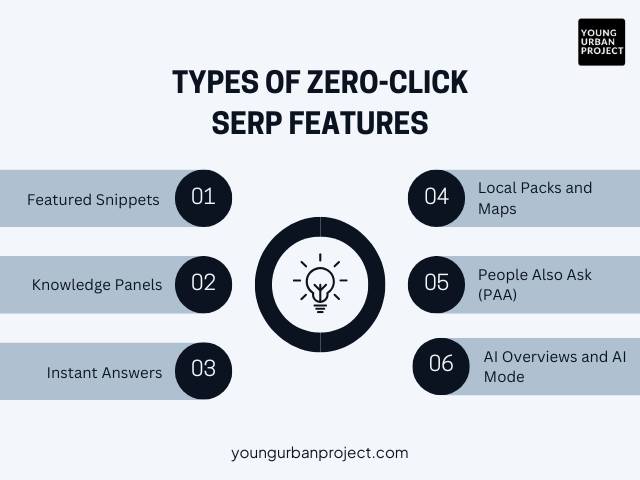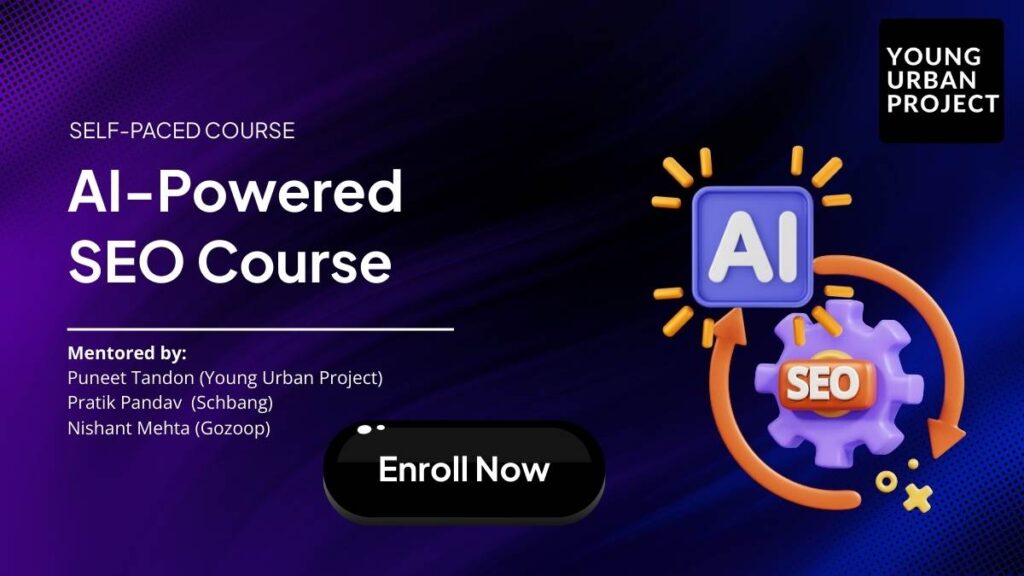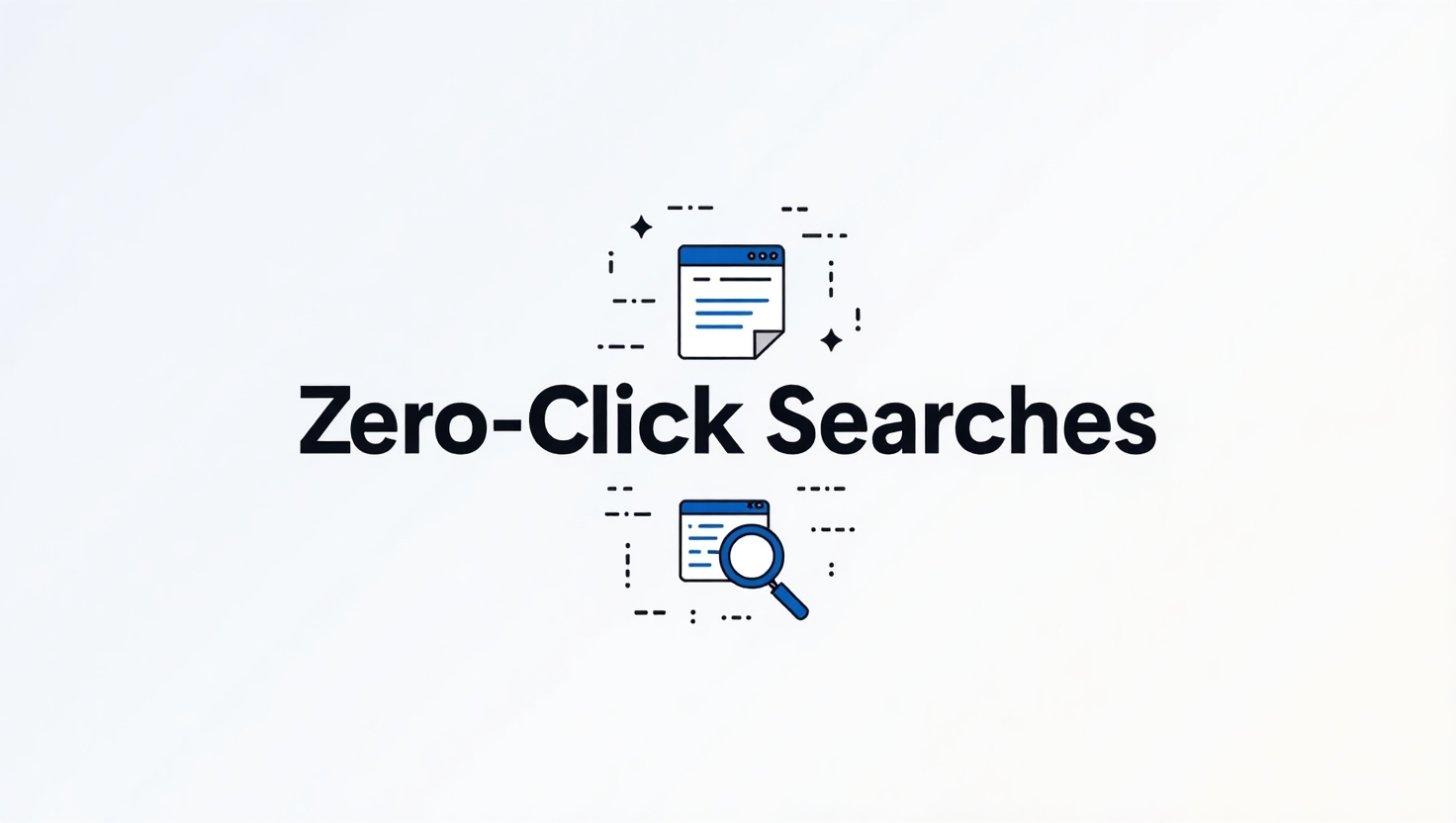If you’ve been in the SEO or content marketing world for even a short while, you might have heard the term “zero-click searches” buzzing around.
Table of Contents
At first glance, the phrase seems a bit ominous. After all, isn’t the entire point of SEO to get clicks to your website?
Exactly. That’s why zero-click searches have become such a hot topic. They represent a fundamental shift in how search engines—especially Google—are functioning today. But more importantly, they signal a need to adapt our SEO strategies in order to thrive in this new search environment.
This blog post breaks down everything you need to know about zero-click searches: what they are, why they happen, how they impact your website traffic, and the smart strategies you can use to stay ahead.
What are Zero-Click Searches?
A zero-click search is any search result that gives the user the answer directly on the search engine results page (SERP), so they don’t need to click any further.
In other words, Google answers the user’s query right there in the search results. No need to visit a website.
Examples of Zero-Click Searches:
- Searching for “time in Tokyo” and seeing the current time immediately.
- Typing “weather in Mumbai” and getting a full weather forecast at the top.
- Looking up “Elon Musk age” and seeing his age displayed in bold without needing to visit Wikipedia.
In all these cases, users get what they need instantly. The search journey ends before it even begins.
According to a 2022 study by Semrush, over 57% of mobile searches and around 53% of desktop searches end without a click. That’s a massive chunk of traffic that’s essentially bypassing websites altogether.
Why Are Zero-Click Searches Increasing?
There are a few major reasons:
1. Google’s SERP Features Are Evolving Rapidly
Google has evolved from being just a gateway to information to becoming the provider of information. With features like:
- Featured Snippets
- Knowledge Panels
- People Also Ask (PAA) boxes
- Instant Answers
- Google Maps Widgets
- Local Packs
…users often don’t need to click anything. Google scrapes and presents the information itself.
2. The Rise of Mobile and Voice Search
More than half of all web traffic comes from mobile devices. Mobile users are typically looking for quick answers on the go. Voice search with tools like Siri, Alexa, and Google Assistant has amplified this. These tools often read out the answer, and it’s almost always a zero-click result.
3. User Behavior is Changing
Today’s users are impatient. They expect instant gratification. They want answers now, and zero-click search results provide that.
4. Introduction of AI Overviews and AI Mode (2024–2025)
A major development in the search landscape was Google’s introduction of AI Overviews in 2024. These are AI-generated summaries that appear at the top of the search results, pulling together information from multiple sources to provide a quick, synthesized answer.
AI Overviews are now live in over 100 countries, including India, and they’re designed to handle complex queries that once required digging through multiple web pages. For example, if someone searches “best yoga or pilates studios in Boston with intro offers near Beacon Hill,” Google now presents a comprehensive AI summary—potentially eliminating the need for any clicks at all.
Building on this, Google rolled out AI Mode in early 2025, giving users a conversational, Gemini-powered search experience. This lets users ask multi-part, highly specific questions and get detailed, AI-generated answers in return. These AI-driven tools are further cementing the era of zero-click, and even zero-visit, search behavior.
Also Read: Best AI SEO Tools to Boost Rankings
Types of Zero-Click SERP Features
Let’s look at the most common elements on a SERP that often lead to zero-click searches:

1. Featured Snippets
Also called “Position Zero,” these are text boxes at the top of the page that answer the search query directly. They often extract content from a website and attribute it with a link (though few users actually click it).
2. Knowledge Panels
These appear on the right side (desktop) and contain curated info about people, companies, events, etc. Powered by Google’s Knowledge Graph, they pull from trusted databases like Wikipedia.
3. Instant Answers
Basic factual responses like calculations, conversions, time, dates, sports scores, etc.
4. Local Packs and Maps
When users search for a place or service near them (“best coffee shop near me”), Google shows a map and business listings, often enough to satisfy the query without any clicks.
5. People Also Ask (PAA)
These expandable questions give multiple related queries and their answers. Users often find everything they need here.
6. AI Overviews and AI Mode
The newest entries in this category, AI Overviews and AI Mode, take zero-click to the next level. Instead of just answering one question, they attempt to fulfill multiple intents within a single, intelligent response.
Also Read: Technical SEO Checklist
The Impact of Zero-Click Searches on SEO & Website Traffic
This is the part that stings a little.
Zero-click searches mean that even if you’re ranking #1, your organic traffic might be flatlining or dropping.
Key Impacts:
- Reduced Click-Through Rate (CTR): Your page may rank well, but fewer people actually visit it.
- Increased Competition on SERPs: More SERP real estate is occupied by Google features than actual website links.
- Shift in Keyword Targeting Strategy: Informational, question-based keywords often trigger zero-click features, making them less valuable from a traffic standpoint.
- Content Cannibalization by AI Summaries: AI Overviews and conversational search features can use your content without sending users your way.
Industries Most Affected:
- Travel (weather, currency, time)
- Healthcare (symptoms, quick answers)
- Education (definitions, dates, summaries)
- Local services (maps, phone numbers)
- Affiliate marketing and review-based content (heavily summarized by AI)
But it’s not all doom and gloom.
Why Zero-Click Isn’t Always a Bad Thing
Here’s the nuance.
Sometimes, zero-click visibility can still be valuable. If your brand appears in a featured snippet, AI Overview, or a knowledge panel, you’re gaining authority, visibility, and trust.
You may not get the click, but you become a part of the user’s journey. Especially for brand awareness and top-of-funnel visibility, this can be gold.
Plus, being featured in snippets or PAA increases the chances that voice assistants and AI chatbots use your content for spoken or generated responses.

Enroll Now: AI-Powered SEO Course
How to Optimize for Zero-Click Searches (and Still Win)
Okay, now that we understand the landscape, how do we adapt?
Here are smart strategies to thrive in a zero-click world:
1. Target High-Intent Keywords
Focus on search queries where users are looking to take action, not just get information. These include:
- Buying guides
- Product comparisons
- Tools (e.g., calculators, planners)
- Local services with calls to action
These searches are less likely to be zero-click because users want more than just a quick answer.
Also Read: Types of Keywords in SEO
2. Optimize for Featured Snippets and AI Overviews
Use these tactics:
- Use question-based H2s and H3s (“What is XYZ?”)
- Provide concise, structured answers (40-60 words)
- Use lists, tables, and steps
- Use schema markup (FAQ, How-to, etc.)
- Write content that answers compound queries the way AI Overviews would
3. Double Down on Brand Building
When people recognize and trust your brand, they’re more likely to seek you out specifically.
Even if they first see you via a zero-click result, strong branding helps with:
- Direct traffic
- Repeat visits
- Brand-based searches (which typically have higher CTR)
4. Leverage Rich Snippets and Structured Data
Adding schema markup helps Google understand your content better and can make your results more visually appealing (stars, images, prices).
This can improve visibility and click-throughs.
5. Focus on Content Depth
Create content that provides more than just an answer.
Go deep. Add:
- Unique insights
- First-hand experience
- Case studies
- Interactive tools
This kind of content invites the click.
Also Read: What is Indexing in SEO?
6. Answer, But Don’t Give It All Away
This is subtle but effective.
If you rank in a snippet, give a strong enough answer to get featured, but leave room for curiosity.
Example:
Q: What is intermittent fasting?
A: Intermittent fasting is an eating pattern that cycles between periods of fasting and eating. There are several methods, including the 16/8 method, which…
See that ellipsis? It encourages users to click for the full explanation.
7. Optimize for Local SEO
For businesses that rely on local customers, make sure your Google Business Profile is rock solid:
- Update your hours, phone number, and address
- Collect and respond to reviews
- Post updates and photos
- Use local keywords
This ensures you show up in Maps and local packs, where zero-click isn’t a dead-end but a phone call or visit. If you’re looking for an edge, working with an experienced SEO company in the USA can ensure your local and national optimization strategies are fully aligned.
Also Read: What is Answer Engine Optimization (AEO)
8. Use Multiple Content Formats
Some queries are better answered with:
- Videos
- Infographics
- Tools or calculators
- Podcasts
Google often highlights diverse content types. Get in on those carousels and video panels.
Also Read: All Advantages and Disadvantages of SEO
The Future of Zero-Click SEO
Let’s face it: zero-click isn’t going away. If anything, it’s going to grow as AI-powered search becomes more dominant.
In this new era:
- Traditional SEO must evolve into Visibility Optimization.
- Success is not just about clicks but being present where your audience is looking.
AI Overviews, AI Mode, and Search Generative Experiences (SGE) are pushing the boundaries of how users consume content. That means your content needs to be:
- Trustworthy
- Multi-layered
- Optimized for AI interpretation
More than ever, the focus should be on building trust, providing unique value, and creating content that stands out beyond what a snippet or AI summary can deliver.
Also Read: What is Google E-E-A-T?
Final Thoughts
Zero-click searches are not the end of SEO. They’re just a sign that the game is changing.
Yes, you may get fewer clicks from some keywords. But with the right strategy, you can still win:
- Win brand visibility
- Win user trust
- Win the top-of-mind space
And when users do decide to click, they’ll know exactly who they’re looking for: you.
So, rather than resisting the zero-click wave, learn to ride it.

